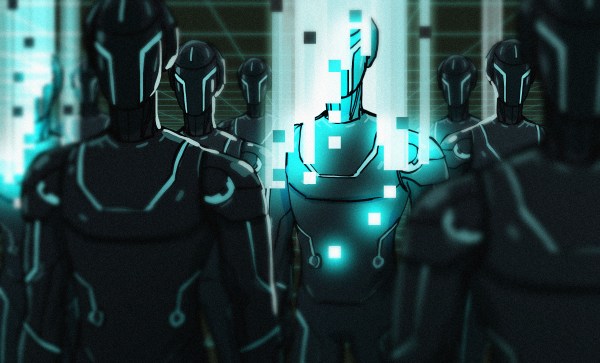There’s a time in every geek’s development when they learn of Conway’s Game of Life. This is usually followed by an afternoon spent on discovering that the standard rule set has been chosen because most of the others just don’t do interesting things, and that every idea you have has already been implemented. Often enough this episode is then remembered as ‘having learned about cellular automata’ (CA). While important, the Game of Life is not the only CA out there and it’s not even the first. The story starts decades before Life’s publication in 1970 in a place where a lot of science happened at that time: the year is 1943, the place is Los Alamos in New Mexico and the name is John von Neumann.
Recap: What is a CA?

The ‘cellular’ part in the name comes from the fact that CAs represent a grid of cells that can be in a number of defined states. The grid can have any number of dimensions, but with three dimensions the visual representation starts to get into the way, and above that most human brains stop working, so two-dimensional grids are the most common — with the occasional one-dimensional surprise. The cells’ states are in most cases discrete but a subset of continuous CAs exists. During the operation of a CA the future state of every cell in the grid is determined from each cells state according to a set of rules which in most cases take into account the states of neighboring cells.
Continue reading “Beyond Conway: Cellular Automata From All Walks Of Life”


















